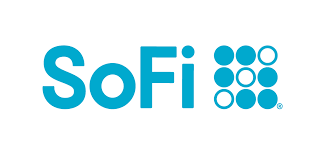Here's How Long It Would Take to Save for College Today
KEY POINTS
- The average 2022-23 public four-year in-state college experience costs $23,250.
- A hypothetical person who invests $7,000 per year might spend eight years saving for a public four-year university and 12 years for a private four-year university.
- 529 savings plans and high-yield savings accounts make saving for college easier.
Public college is generally more affordable.
College is expensive. It cost me over $70,000 to earn a bachelor's degree at a California state university -- and of all the schools that accepted my application, that was my cheapest option. I borrowed money for school, and my family pitched in to help me cover the total cost of tuition and housing.
The National Center for Education Statistics (NCES) claims college costs continue to rise faster than inflation. In 2020-2021, the average sticker price for a 4-year private university (tuition only) was $32,825. But 10 years prior, it was only $22,677.
The nonprofit College Board provided the average 2022-2023 sticker price for just one year of university, including tuition and fees and room and board:
- Public two-year in-state: $13,470
- Public four-year in-state: $23,250
- Public four-year out-of-state: $40,550
- Private four-year: $53,430
Yeesh. Talk about sticker shock.
Don't panic. Federal aid and private scholarships can shrink the cost of college. And then there are ways to save on housing. Living at home can substantially lower the total cost of earning a degree.
That said, if history is any indication, costs for traditional higher education will continue to rise. With that in mind, let's conduct a hypothetical thought experiment to calculate how long it might take someone to save for college today.
A hypothetical
Let's aim high. Say we want to 100% cover the average cost of attending college at a private four-year university. That's about $54,000 per year, for a total of $216,000 over four years. Yes, we are excluding any potential financial aid.
To calculate how long it might take someone to save $216,000 for the entire private four-year university experience, let's assume the following:
- They dollar-cost-average into the S&P 500.
- They deposit $7,000 per year (the median U.S. income is about $70,000)
- Their investment earns a 14.8% return (the historical market average over the past decade, which is definitely on the optimistic side going forward).
In that case, it would take someone about 12 years to save for college. However, the sticker price of tuition and room and board will probably be even higher 12 years from now.
Fun fact: It would take the same person only eight years to save $96,000 for a public in-state four-year college. Public colleges can be way cheaper than private. Don't discount them!
Here are two places to stash your college savings: a 529 savings plan and a high-yield savings account. The former offers potentially higher returns; the latter is more stable.
Save through a 529 plan
A 529 plan is a tax-advantaged investment account designed to help you save for college expenses. A 529 savings account works a lot like a retirement plan. One significant advantage is that withdrawals are tax-free.
For example, if you invest $10,000 and earn $3,000 profit in capital gains, you don't have to pay taxes on those earnings. The caveat is that you must spend earnings on education expenses.
Save through a high-yield savings account
You can stash away money in a savings account. Your potential returns are low, but you won't be at the mercy of a volatile market. The best high-yield savings accounts offer savers the highest possible returns on investment.
How much should you save?
Use a college cost calculator to estimate what you'll need to cover tuition. Students can borrow to cover the rest. An alternative is slowly paying one's way through college, possibly by staggering classes, earning an online degree, or working part-time.
Regardless, the earlier you start saving up for tuition, the better. It gives your money more time to compound in a tax-advantaged 529 plan or a high-yield savings account.
Our Research Expert
We're firm believers in the Golden Rule, which is why editorial opinions are ours alone and have not been previously reviewed, approved, or endorsed by included advertisers. Motley Fool Money does not cover all offers on the market. Motley Fool Money is 100% owned and operated by The Motley Fool. Our knowledgeable team of personal finance editors and analysts are employed by The Motley Fool and held to the same set of publishing standards and editorial integrity while maintaining professional separation from the analysts and editors on other Motley Fool brands. Terms may apply to offers listed on this page. APYs are subject to change at any time without notice.



